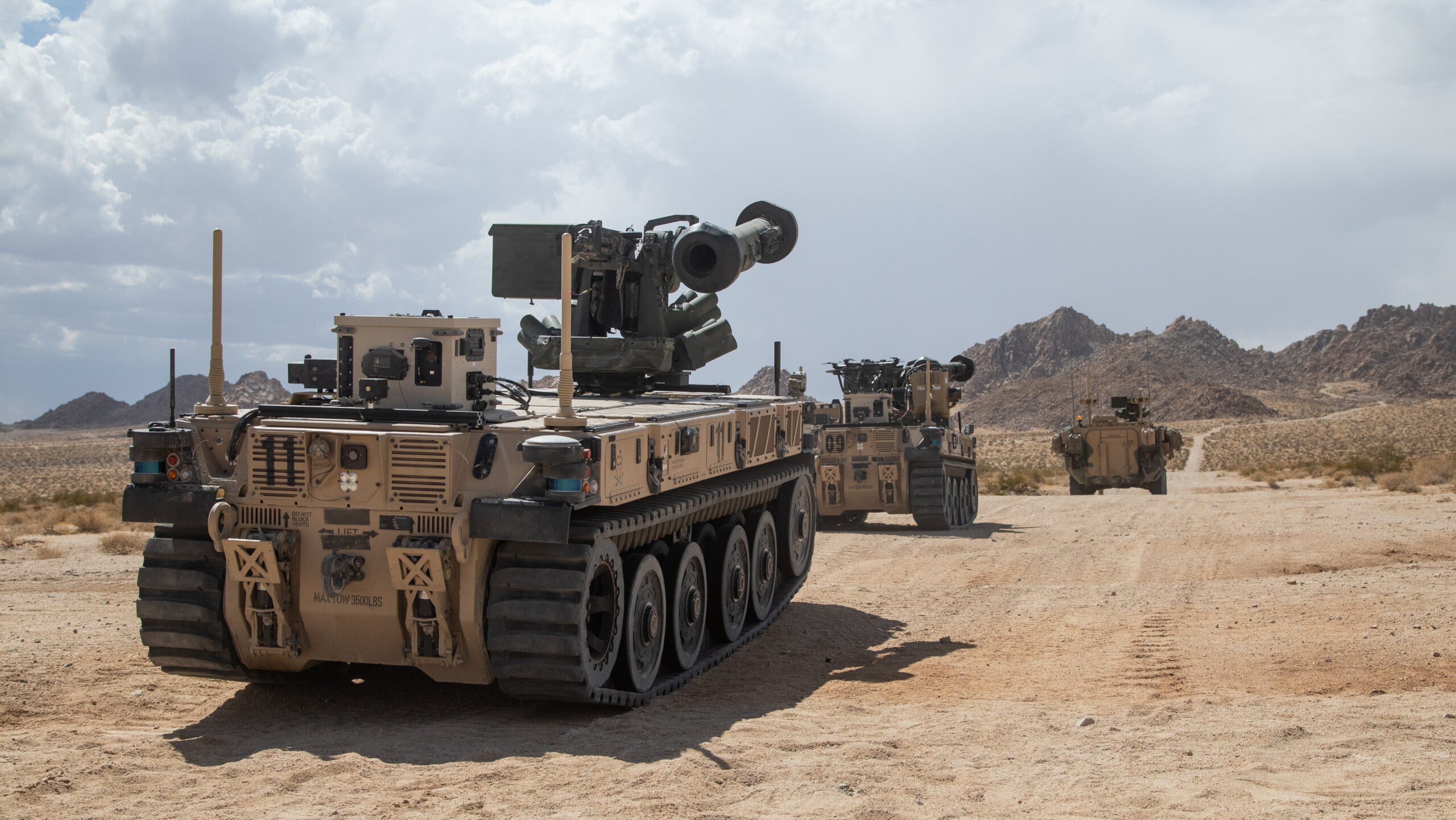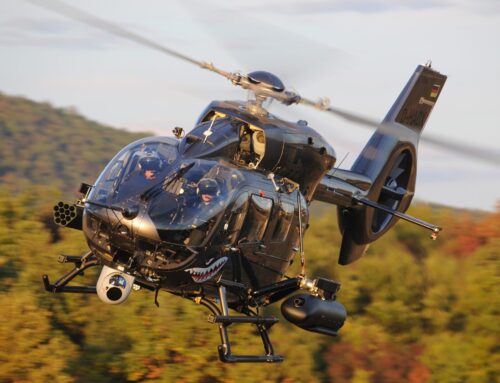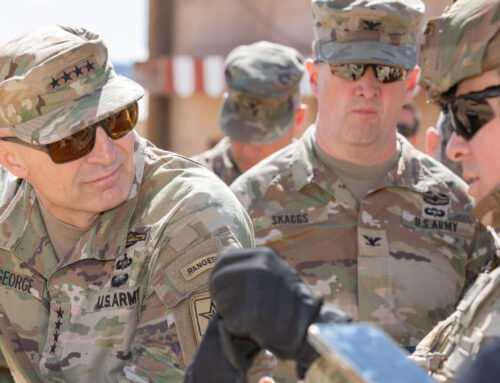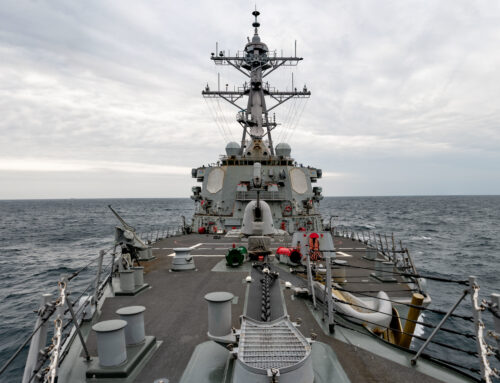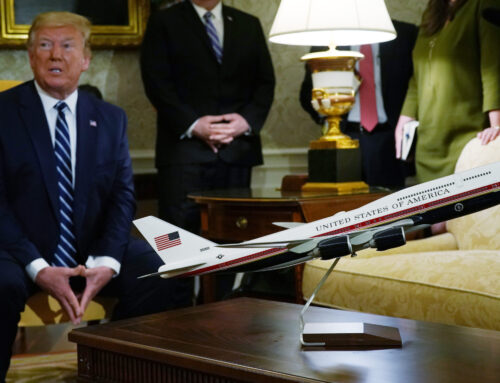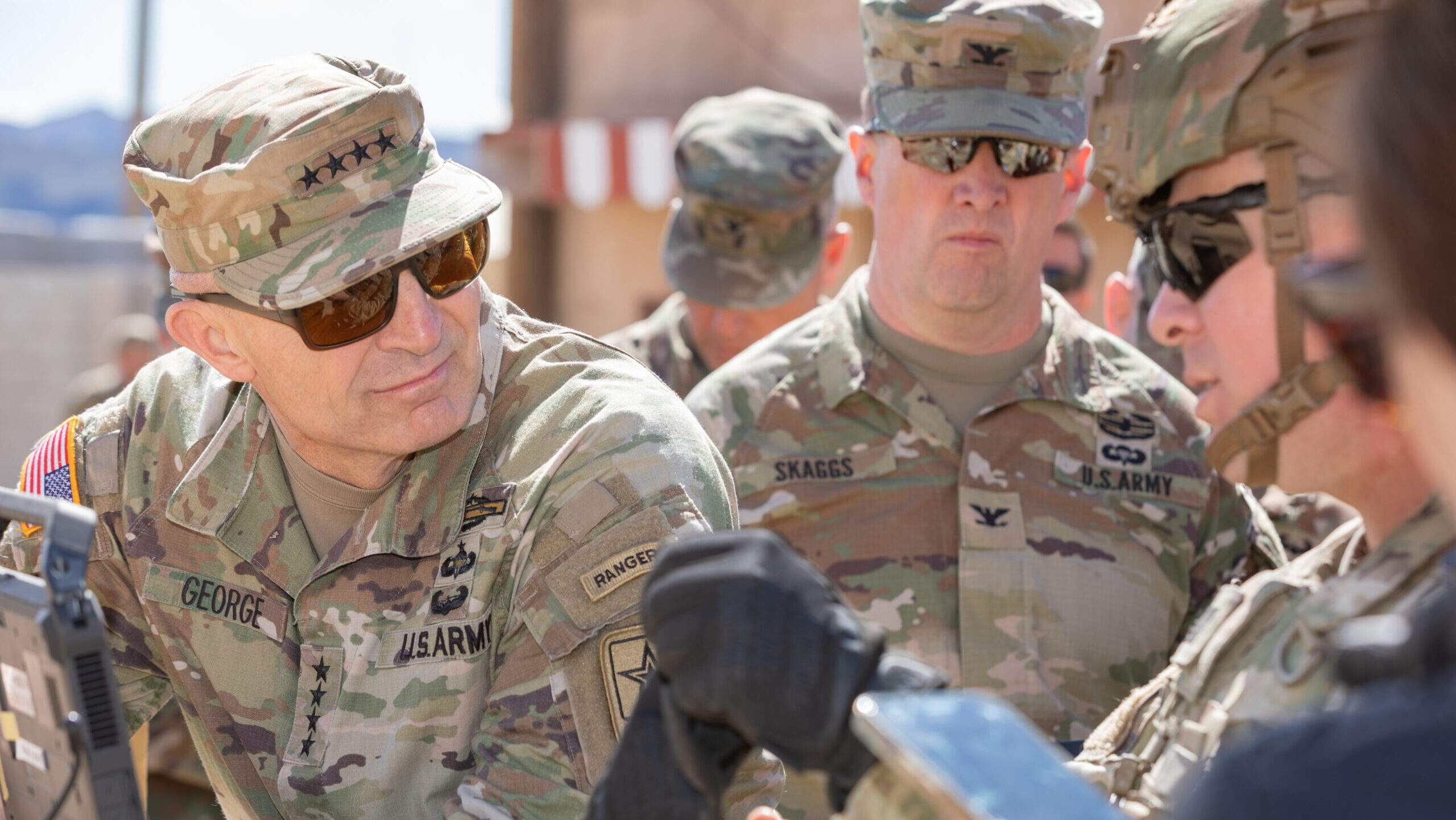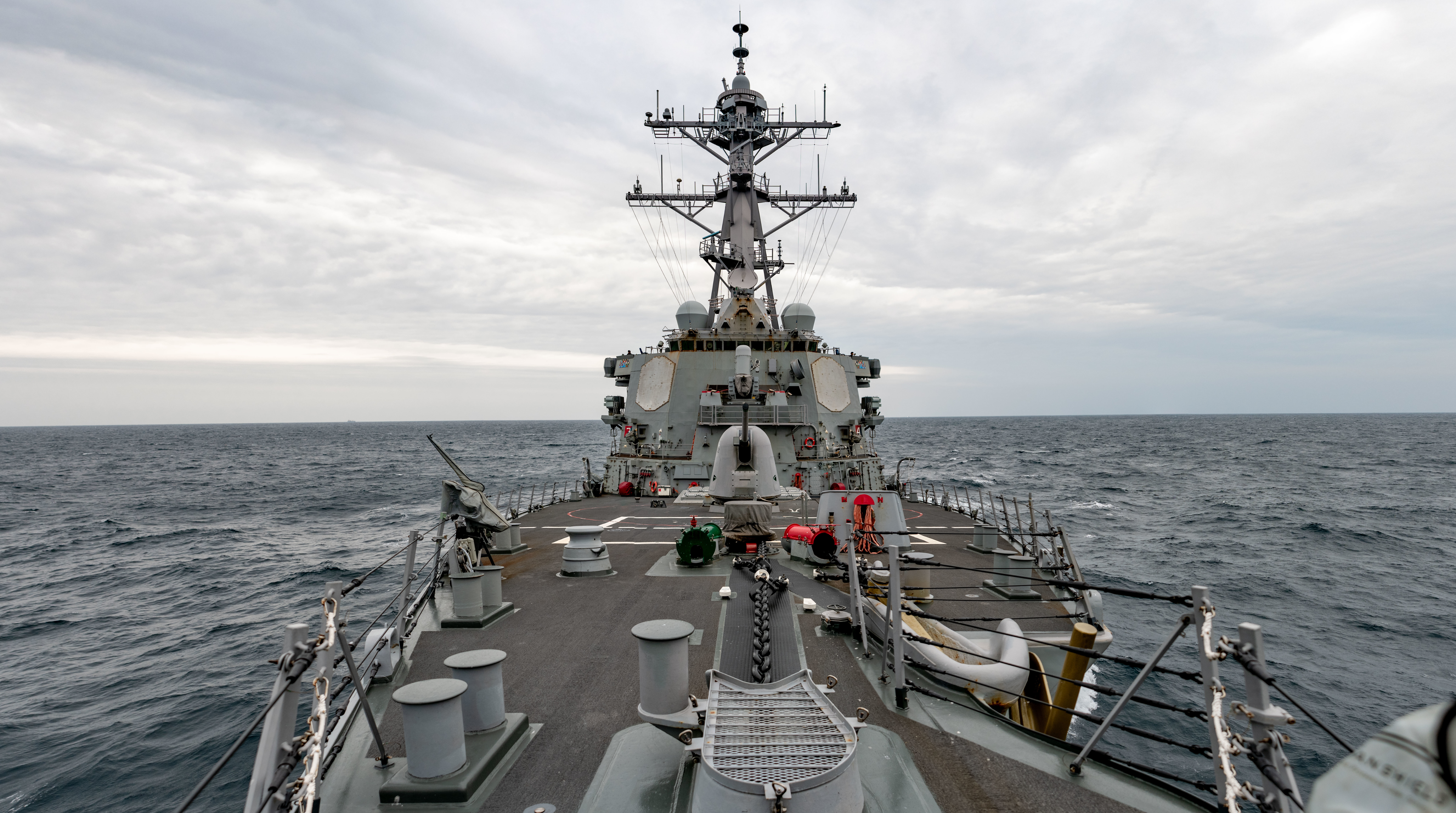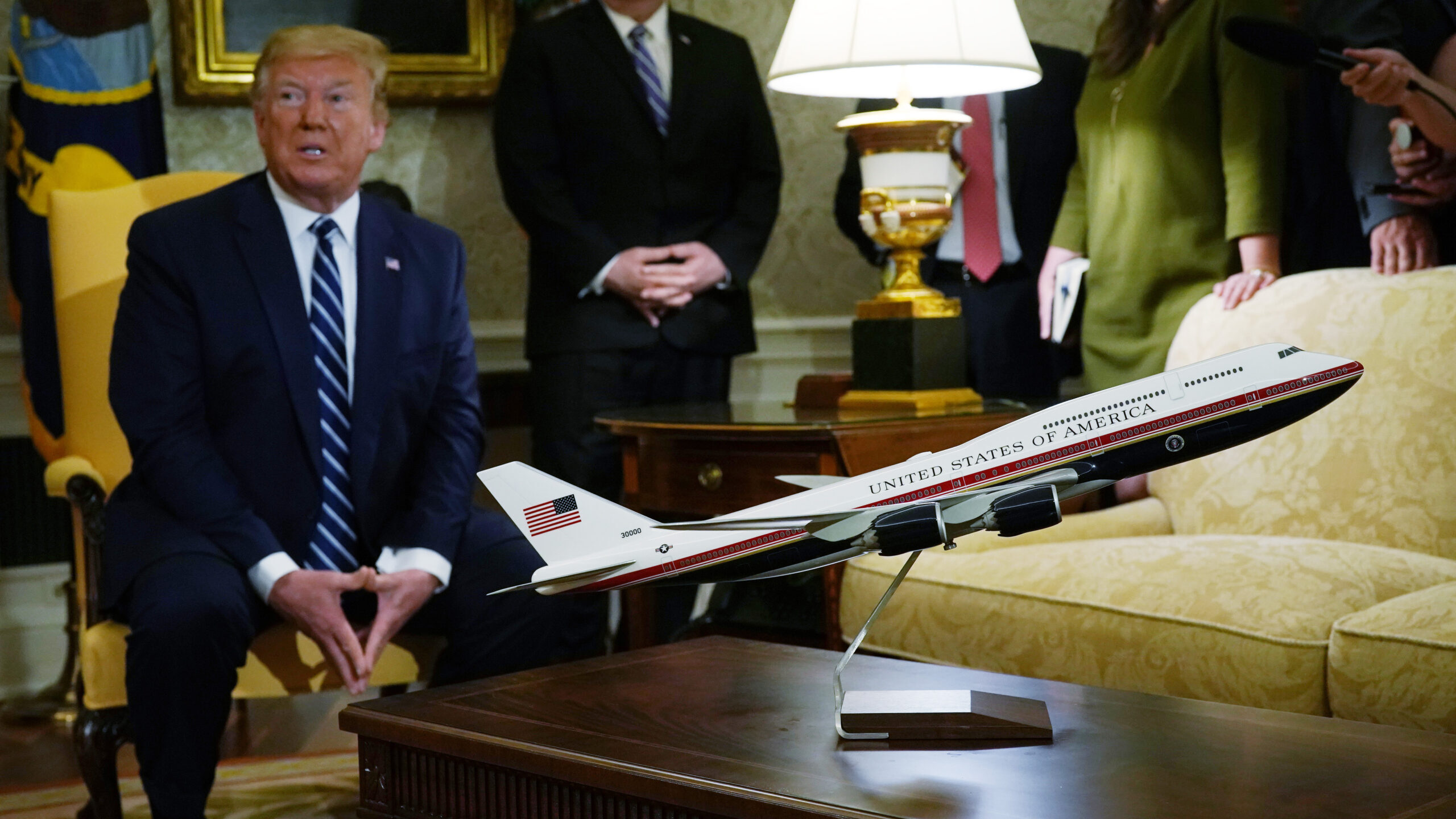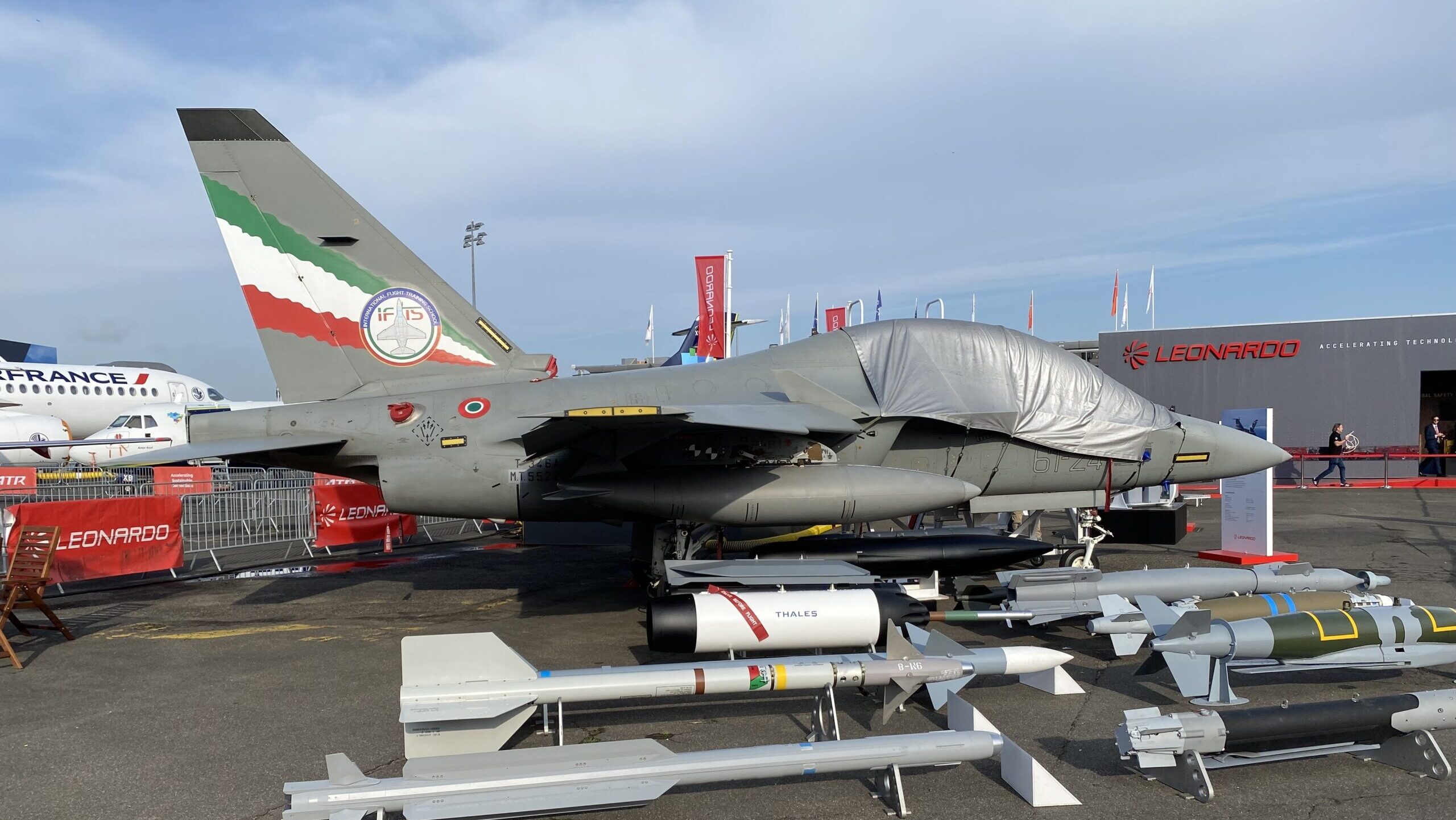A Robotic Combat Vehicle Light prototype during Soldier Experimentation at the National Training Center, NTC, Fort Irwin, Calif. from July to September 2023. (US Army/ Savannah Baldwin)
WASHINGTON — Testing has found that additional US Army soldiers are likely needed to operate early Robotic Combat Vehicles than anticipated even just months ago, the service disclosed this week.
Under the Army’s envisioned “human machine integrated formations,” the service wants a future where RCVs are out ahead of soldiers on the front lines, taking on dangerous missions without potential loss of life. However, the service is not expecting early versions of those robots to have high levels of autonomy, which means soldiers will need to stay close by teleoperating them for the foreseeable future.
Based on testing earlier this year at Fort Irwin, Calif., service leaders believed that for every two RCVs, it would need one control vehicle containing five soldiers — one driver and two teams with two each remotely manning an RCV.
But in late July, as part of the Army Futures Command’s RCV Pilot-24 exercise, soldiers with the 1st Squadron, 7th Cavalry Division, again used the four RCV surrogates. The idea, the service explained in a Tuesday press release, was to have soldiers inside two trailing control vehicles operating a total of four RCVs on reconnaissance and security missions.
The verdict? That wasn’t an adequate pairing that time around, and the platoon needed a third control vehicle to effectively operate the four robots, according to Brig. Gen. Chad Chalfont, the commandant of the Army Armor School at Fort Moore.
As a result, the unit was “restructured” and a third control vehicle was folded into the mix, the service explained. The service did not detail how many soldiers were now in each control vehicle, but if the math holds, that would be an additional five soldiers needed towards the front lines.
While that July test event is moving the manned vehicle to robot ratio in the wrong direction, service officials previously told Breaking Defense that it is going to take time to develop and field RCVs. And part of that process may mean soldiers closer to the robots they control, as well as using them for limited missions while work continues evolving on a number of fronts.
The service is testing out those RCV surrogates and control vehicle to examine how they may operate them in battle and tech limitations but still hasn’t selected which company will build the initial RCVs. That decision is expected to come in early 2025 when one company is picked to proceed with platform development. (McQ, Textron Systems, General Dynamics Land Systems, and Oshkosh Defense are all under prototyping contracts today.) And it has broadly laid out plans to use an Armored Multi-Purpose Vehicle (AMPV) as the future control vehicle.
Separately, the Army’s Combat Capabilities Development Command’s (DEVCOM’s) Ground Vehicle Systems Center is developing an autonomy package previously known as the Robotic Technology Kernel (RTK) but recently rebranded as Army Robotic Common Software (ARCS). That autonomy package is currently aligned to be integrated into RCV.
However, the service has a separate RCV software initiative through the Defense Innovation Unit called the Ground Vehicle Autonomous Pathways (GVAP) project. Through that initiative, it has handed out a host of contracts for three RCV software pipelines — autonomous navigation, machine learning and autonomy, and software system integrators.
In recent months industry sources from all sectors have raised questions about how DEVCOM’s work and the GVAP project will ultimately converge, and the service is now hosting a Nov. 20 industry day to try and clear up confusion. There, it said, it will unveil a “technology roadmap” to help each company “make its best effort to align their technology against timing of future opportunities nested with the forecasted needs of the RCV program.”
“The industry day will clarify key points and provide updates regarding the RCV platform as it relates to tele-operation and growth to autonomous movement,” the Army wrote in an announcement.


